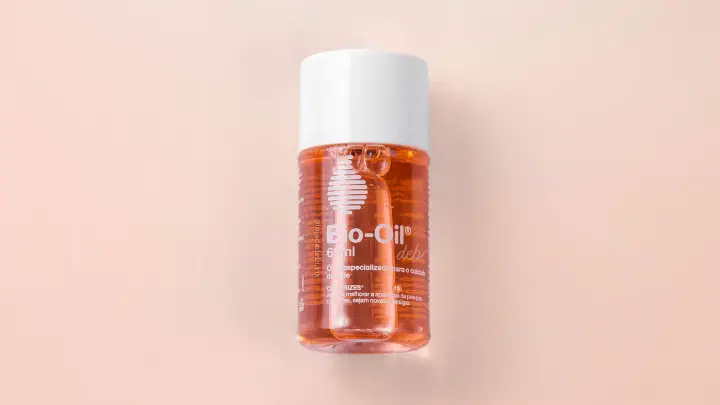Salicylic acid and retinol are on the list of skincare ingredients dermatologists say you shouldn’t mix and match. You may have both ingredients in your routine, but you should not layer or mix them.
Skincare goes from understanding the rule of thumb that governs the application of products to knowing your ingredients. It also includes your understanding of how each ingredient works and which ingredients complement each other.
Acids, alpha hydroxy acid and beta hydroxy acid (AHA & BHA), and retinol are strong actives. So, you should be mindful of how and with what you use them. Separately, each is a powerful acne-fighting ingredient. How about together? Should you use salicylic acid with retinol?
Salicylic Acid
Salicylic acid is a BHA that exfoliates your skin of dead skin cells to improve texture and appearance.
This common BHA is oil-soluble, and this is why it can penetrate your skin into sebum to loosen the bond between the dead cells and excess oil that clog your pores. This exfoliating action is what makes salicylic acid the dread of acne.
Dr. Hadley King describes salicylic acid in these words, “salicylic acid is an excellent comedolytic ingredient because it is oil-soluble and can penetrate pores to gently exfoliate and remove excess sebum”.
You can call this BHA a boon for oily and acne-prone skin. Moreover, its antibacterial properties fight off and kill the bacteria responsible for acne breakouts.
Salicylic acid helps to tame adult acne breakouts, soothing the inflamed skin and increasing cell turnover to heal and fade the scars.
More so, salicylic acid is not tolerable by acne and its scars. However, it has great drying effects and as such, it must be used with caution.
Retinol
Retinol, a vitamin A derivative, is commonly touted to treat signs of aging. Indeed, it has a reputation for smoothening fine lines and wrinkles that may be signs of premature or natural aging. Retinol stimulates collagen synthesis to restore your skin to plumpness.
Moreover, it inhibits the action of enzymes that can break down collagen. Alongside collagen synthesis, it stimulates the production of elastin. Therefore, working overall to promote skin elasticity.
While retinol penetrates your skin and stimulates these syntheses, it unclogs your pores, making it an effective treatment for acne. In addition, it stimulates cell turnover which brings about skin rejuvenation and the fading away of scars (acne or hyperpigmentation).
On the flip side, retinol does not go well as a sole ingredient to treat skin conditions. It is very reactive and dries out the skin. So, it must be used alongside ingredients that will soothe these effects.
Retinol makes your skin photosensitive. Whether you use it over or under another ingredient, you must layer a broad-spectrum sunscreen to shield your skin from sun damage.
Can You Use Salicylic Acid With Retinol?
If you do not plan to layer or mix the two ingredients, you can use salicylic acid and retinol in your skincare routine. Otherwise, it is a no-no. And this is verified by dermatologists.
“Retinol is extremely unstable. It doesn’t play nicely with salicylic acid or benzoyl peroxide. Combining two leave-on, like masks or overnight treatments, can hit the skin too hard if you use them all at one time”, says Dr. Joshua Zeichner, a board-certified dermatologist.
While these ingredients are very effective, they share similar downsides. Salicylic acid and retinol have common drying effects and they make your skin photosensitive.
Mixing and matching them can worsen the skin condition you hope to treat. Even worse, it can lead to new breakouts.
Combining both ingredients puts your skin at a greater risk for irritation. Consequently, this irritation damages your skin barrier and increases the rate of transepidermal water loss.
In addition, these two ingredients have different pH values and may deactivate each other when layered. Salicylic acid is active at a pH range of 3-5 while retinol is active in the range of 5.5-6.
Can You Use Salicylic Acid With Retinol for Acne?
Salicylic acid and retinol are great ingredients for the treatment of acne. However, you should bear in mind that while they are excellent, they can turn against your skin.
Acne breakouts are sometimes a result of excessively dry skin. These ingredients together dry out your skin. A natural compensation for this dryness is an overproduction of sebum. It eventually results in acne breakouts.
What should have been an acne treatment is hijacked and becomes a vicious cycle of acne breakouts. And these breakouts may be accompanied by worse skin conditions like eczema.
How to Use Salicylic Acid With Retinol
To get the best of both skincare ingredients, you should use them alternately and in ways that work for your skin type and its concerns. See three ways to use these skincare ingredients in your routine.
At alternate times of the day
One way to use these ingredients in your skincare routine is to use salicylic acid in the morning and retinol in the evening. If you have oily or acne-prone skin, use a salicylic acid-based cleanser, serum, or exfoliator in the morning.
Most importantly, apply products following the rule of thumb of skincare. Additionally, add SPF because salicylic acid can make your skin sensitive to sun rays. During your evening routine, use a retinol-based serum or cream.
On alternate nights
Here’s another way to use these active ingredients without irritating your skin. Use products that contain other ingredients like hyaluronic acid and vitamin C, which are tolerable. Resort to salicylic and retinol-based products in the evening.
Based on your skin’s tolerance, use salicylic acid one night and retinol on another night. Sensitive skin type fares better with this method of use. It allows your skin to breathe and soak up the benefits of one ingredient before another is used.
Also, it is best you pre-treat your skin with salicylic acid for a few nights before you slowly introduce retinol. Begin with smaller concentrations and frequencies of retinol until your skin can perfectly tolerate it.
Use retinol 30 minutes after salicylic acid
If you must use both ingredients in one routine, you can opt for this method of use. Salicylic acid cleansers or exfoliators alter the natural pH of your skin. Layering retinol immediately after salicylic acid is rather counterproductive. This will render both actives ineffective and harm your skin.
After a salicylic acid-based product, give your skin 30 minutes or a little more to return to its normal pH before you apply retinol. This is even better because your skin is open to receiving the goodness of retinol. More so, retinol is more tolerable for your skin.
Whichever way you choose to use both skincare ingredients, always layer a broad-spectrum sunscreen over your skin. Both ingredients make your skin photosensitive.
Are There Any Potential Risks?
Yes, there are. Using salicylic acid with retinol in one routine can be bad for your skin. Individually, they can be very irritating and expose your skin to compensation with excess production of sebum. Instead of treating conditions like acne, it aggravates the condition.
Furthermore, using higher doses of retinol at a time can be too drying for your skin.
FAQs
Can you use salicylic acid with retinol on the same day?
Yes, you can. If you prefer to use salicylic acid and retinol on the same day, you can either use them in the same routine or use each at different times of the day.
In one routine, apply retinol 30 minutes after using salicylic acid. This gives your skin time to return to its normal pH. In different routines, retinol is best used in your PM routine, and salicylic acid in your AM routine.
Should you use salicylic acid cleanser with retinol serum at the same time?
Using a salicylic acid cleanser and retinol serum at the same time can over-dry your skin and expose you to more breakouts. After cleansing, it is best to give your skin some minutes to return to its original pH before applying retinol serum.
Should you use salicylic acid before or after retinol?
Salicylic acid should come before retinol in your routine. Generally, skincare products like cleansers, serums, and spot treatments that contain salicylic acid usually come before products like serums and moisturizers that contain retinol.
Conclusion
How to combine skin care ingredients is a common question. Skincare is beyond getting the top-rated brands (though, it’s cool); getting the right ingredients is more important. And using them appropriately is just as important.
Actives like salicylic acid and retinol are excellent for treating acne and improving the overall appearance and texture of the skin. However, results lie in how well you use them. Both ingredients have similar side effects. So, using them together, at the same time, will only be worsening what they should be treating.
You do not have to part ways with these ingredients. Use them alternately and you’ll see results that affirm everything they are touted to do. Most importantly, remember your SPF after applying salicylic acid or retinol.
Thanks for reading.
Read relevant articles that answer your questions about mixing and matching skincare ingredients on Serum101.







